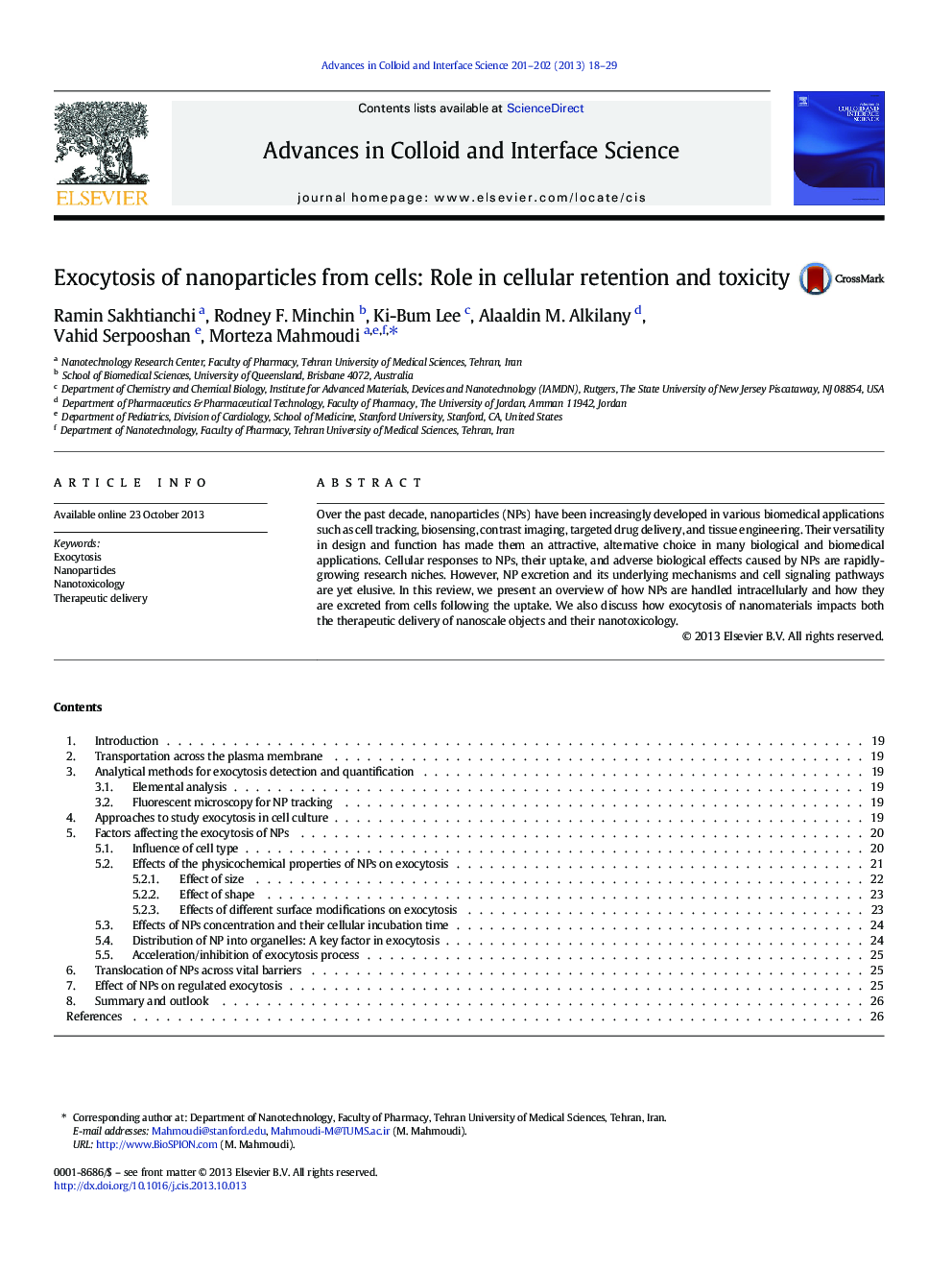| Article ID | Journal | Published Year | Pages | File Type |
|---|---|---|---|---|
| 590769 | Advances in Colloid and Interface Science | 2013 | 12 Pages |
•An overview of how NPs are handled intracellularly and how they are excreted from cells following uptake•Discussion of how exocytosis of nanomaterials impacts both therapeutic delivery of nanoscale objects and nanotoxicology•A better understanding of exocytosis and related cellular functions and their dynamics
Over the past decade, nanoparticles (NPs) have been increasingly developed in various biomedical applications such as cell tracking, biosensing, contrast imaging, targeted drug delivery, and tissue engineering. Their versatility in design and function has made them an attractive, alternative choice in many biological and biomedical applications. Cellular responses to NPs, their uptake, and adverse biological effects caused by NPs are rapidly-growing research niches. However, NP excretion and its underlying mechanisms and cell signaling pathways are yet elusive. In this review, we present an overview of how NPs are handled intracellularly and how they are excreted from cells following the uptake. We also discuss how exocytosis of nanomaterials impacts both the therapeutic delivery of nanoscale objects and their nanotoxicology.
Graphical abstractFigure optionsDownload full-size imageDownload as PowerPoint slide
